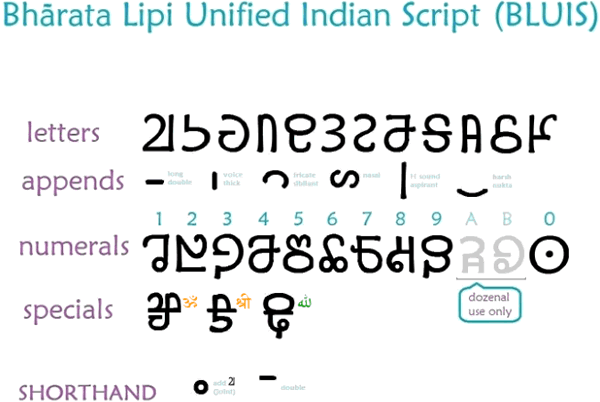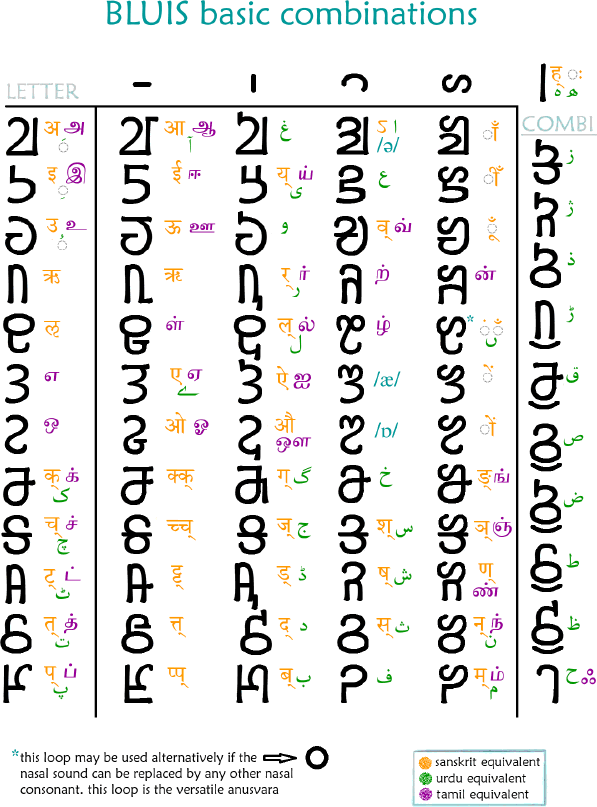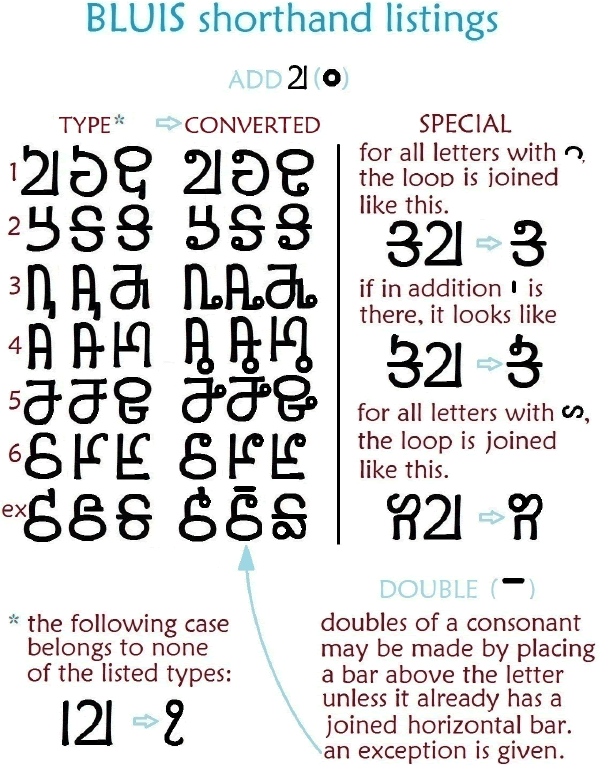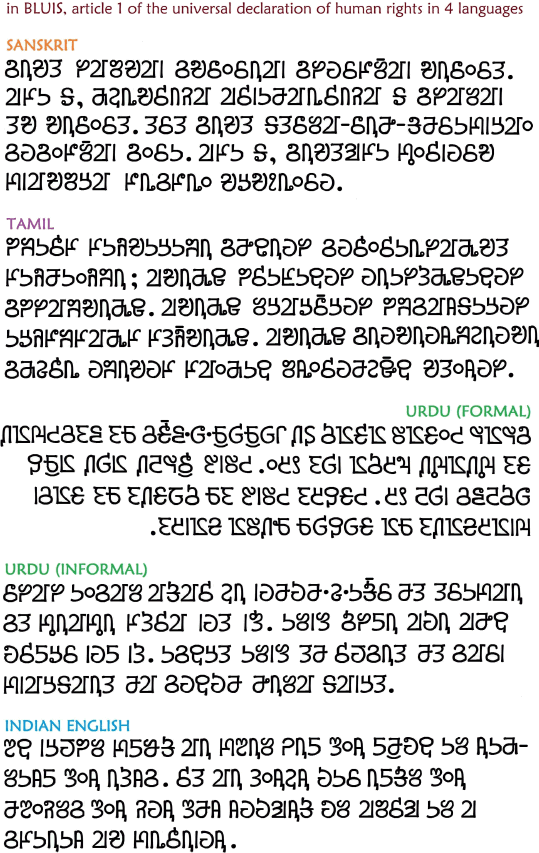BLUIS stands for 'Bharatalipi Unified Indian Script'. This is a script devised to be capable of writing Sanskrit, Tamil, and Urdu with, thus it can be used to write all spoken Indian languages with a certainty of about 96%. However, by no means is the script intended to replace the age old writing systems of the Indian languages in concern. Designed by Punya Pranava Pasumarty, the script uses very simple glyphs in an intuitive manner to develop the various sounds required for use in Indian languages. This script, if implemented, has the following aims in mind:
Most of the languages spoken in India have scripts running from left to right save those like Urdu and Kashmiri, whose direction is the opposite. For these few exceptions, there is a formal and informal version of BLUIS. Whilst the informal version looks just like any other usage of BLUIS, the formal one is written exactly in mirror image horizontally. Furthermore, the informal script takes pronunciation lightly, while the formal version adheres to the exact phonetics as brought out by the arabic script originally for these languages.
BLUIS is neither completely an alphabet nor an abugida. The features of the script are the following.

Rarely would one find letters in their pure form since they often combine with one or more appends to develop the wide array of sounds used in Indian languages. It is therefore helpful to know the basic letter-to-append combinations and their pronunciational equivalents in Sanskrit, Tamil and Urdu in order to actually read text. Note that this script abides by the pronunciation of sounds in Indian languages and so might make changes with respect to that for different Indian languages

These are called basic combinations because one can also use multiple appends on one letter to produce more sounds. As seen in the image, one such combination for the anusvara has a complex glyph, so a simple circle is used in place of it, thus respecting its abundant use.
Some 'further' combinations have been provided in the COMBI column in this image. These are letters formed by attaching more than one append to a single basic letter to form a new sound. This is an indicative list and there are more such combinations.
When writing in BLUIS, there is a convention called the SHORTHAND, mentioned in the script chart, which is followed for convenience and reducing the bulk of text. As can be seen, there are 2 SHORTHAND provisions

The manifestation of the former shorthand takes different forms according to the consonant is is joined to as shown in the image while the latter is uniform for all consonants (which are not already double). The usage of this convention is, unless mentioned otherwise, mandatory for the sake of simplicity and quick writing of text. It is, however, permitted for one to write without shorthand conventions when learning; the compromise is that writing becomes cumbersome without it. The sample text given in this folder uses text with shorthand since that is standard.
* for languages like Urdu and Kashmiri, which officially use the arabic script, this loop may also be used to adjoin short ‘i’ or ‘u’ (instead of short ‘a’) to a consonant, when one can be liberal with the usage of these vowels. Examples of such cases are: kasoor vs. kusoor OR charaag vs. chiraag.








All human beings are born free and equal in dignity and rights. They
are endowed with reason and conscience and should act towards one another
in a spirit of brotherhood.
(Article 1 of the Universal Declaration of Human Rights)
[top]
You can support this site by Buying Me A Coffee, and if you like what you see on this page, you can use the buttons below to share it with people you know.

If you like this site and find it useful, you can support it by making a donation via PayPal or Patreon, or by contributing in other ways. Omniglot is how I make my living.
Note: all links on this site to Amazon.com, Amazon.co.uk
and Amazon.fr
are affiliate links. This means I earn a commission if you click on any of them and buy something. So by clicking on these links you can help to support this site.
[top]